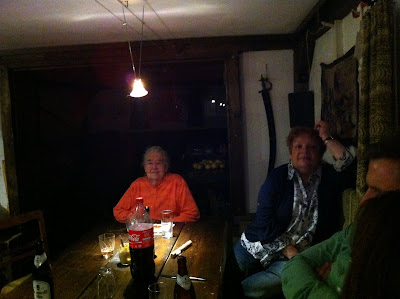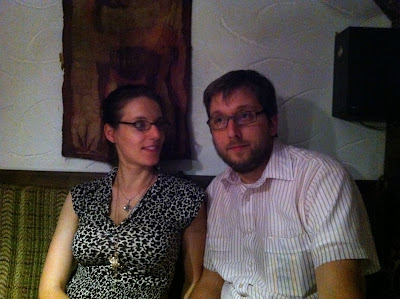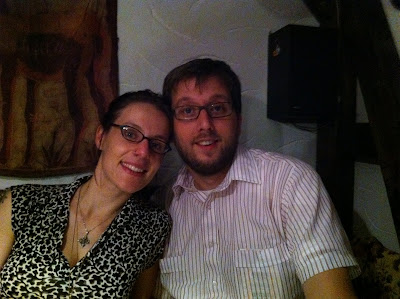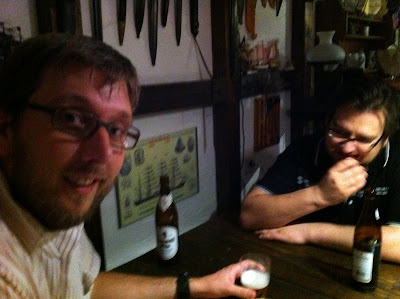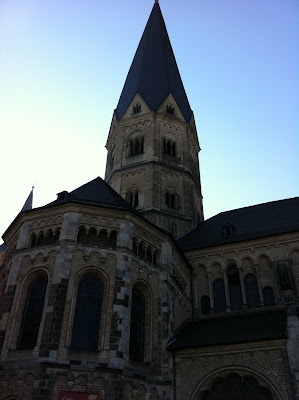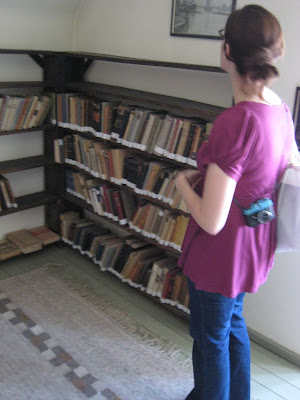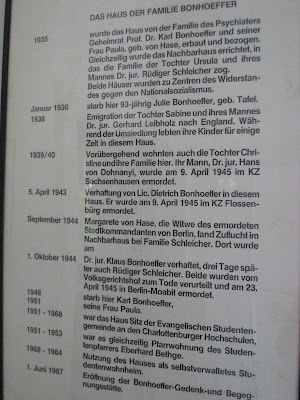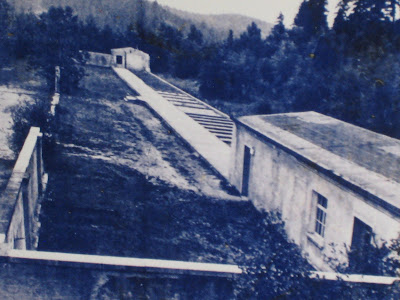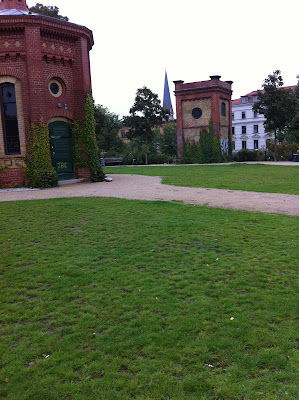
Lisa was given gift-certificates to Berliner Unterwelten (Berlin Underground) from a colleague several months ago. In mid-October, we were able to finally take Tour 1, of a WWII bunker. Berliner Unterwelten e.V., a non-profit, offers 11 tours throughout Berlin and six of those in English. The tours range from WWII bunkers, Cold War bunkers, Flak towers, pneumatic delivery infrastructures, and subway lines, to subterranean escape routes from East Berlin into West Berlin.
For Tour 1, we headed to the U-Bahn Gesundbrunnen station. This station is the deepest U-Bahn station in Berlin and space was created in several floors above the station for civilian protection in WWII. Thousands of Germans used this station in WWII as Allied bombers bombed overhead. This neighborhood was a manufacturing area and therefore a prime Allied target. Since the tour guide said the bomb shelter structurally was useless against a bomb, it is a miracle that the civilians in this shelter weren't killed.
Evidently, the Nazis knew that this shelter was useless against an air raid, but some shelters were constructed around Berlin solely to prevent panic and to assure the public that a plan had been devised for their protection. We toured many rooms, separated by heavy steel doors, a large bathroom with composting toilets, ventilation equipment, bunk-beds, folding beds, safety equipment such as flashlights and gas masks, and fluorescent paint that pointed civilians in the right direction.
In several of these rooms were artifacts from the war- Nazi and Russian military helmets, gas masks, uniforms for the civilian protection corps, weapons, and posters for identifying enemy aircraft and discouraging loose talk.


In the last part of our tour, we viewed some of the remaining infrastructure for a pneumatic delivery system that was used in Berlin from 1865 to 1976 with 90 stations and 400 kilometers of tubing. They demonstrated how the pneumatic system worked and that documents could be sent anywhere in the city, signed and sent back in only two hours. Evidently, Chancellor of Germany still uses a pneumatic dispatch system for communiques throughout the Bundeskanzleramt.


Pictures were not allowed on this tour, so these have been borrowed from the internet. Lisa and I hope when friends and family come to Berlin that we shall view more of these tours.
For more information on these tours, visit: Berliner Unterwelten
